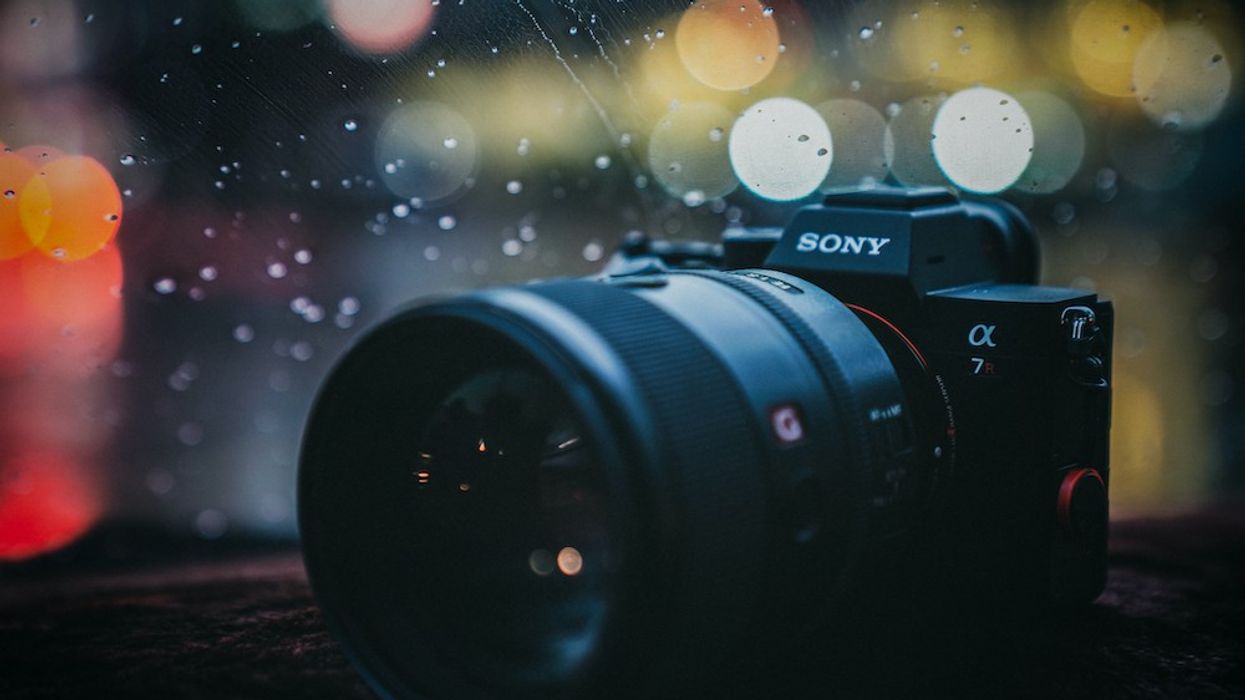5 Things to Keep in Mind Before Filming in the Rain
Natural rain is difficult to catch on camera. Here are some helpful tips on how to capture it without a professional rain rig.

Who wants to look at sunshine all the time? (Okay, maybe some of you are from rainy places and long to be in that Los Angeles sun.) Either way, it's fun to give your films some variety when it comes to weather, and the easiest way to do that is to go with something ubiquitous and accessible, like rain.
The problem is, unless you have a rain rig that is built to dispense big, fat raindrops, you're going to need to know a few tricks to capture the real stuff on camera. So, whether you're filming some stormy scenes for your feature or documenting in a torrential downpour, here are some basic tips on filming in the rain from Shutterstock Tutorials.
Movie Rain vs. Actual Rain
In movies, you might notice that the rain looks heavier. This is what the professionals call “big sexy movie rain." (That's totally a technical term, okay?) Due to the function of a rain rig, the droplets produced are bigger and distributed at a quick pace. Capturing natural rain (especially in more open spaces, such as a forest) is challenging because the droplets are smaller. Additionally, natural rain is falling too fast to capture at 24 frames per second, making the rain look like nothing more than a haze.
If for whatever reason you must film your movie in the rain and can’t afford a rain rig, here are some tips that will help you successfully capture the precipitation.
If You Film at Night, Use Backlights
Something that pretty much guarantees making rain visible on camera is composing your shot against harsh lighting such as a street light or car headlights. The prominent backlight will make the downpour more apparent in your shot.
If You Film in the Day, Use Surfaces
If your story calls for shooting during the day, look to include shots where viewers can see the rain physically falling onto a surface. This could be anything from a car roof to a puddle on the ground catching droplets. Physical impact is sure to communicate to the audience that it is raining.
Rain sounds alone will not sell the idea of the weather.
Use Protection
Weather-sealed does not mean waterproof. The term indicates that there is sealing to the ports, joints, buttons, and camera body, with an additional layer of rubber in some parts to avoid moisture and dust. Typically, it is more difficult to use these cameras in the rain when filming as opposed to taking still shots. Elements such as a wet touchscreen will add a setback when trying to touch the areas you want to focus on more in the shot, as well as an electric viewfinder’s eye sensor acting erratically in heavy rainfall.
This may go without saying, but it’s still important to know that just because your gear is weather-sealed, it is never a good idea to leave it out in the rain. Yes, it has extra pieces that help protect it against water, but it is a bad idea to leave equipment out to be exposed to bad weather conditions.
Your best bet at low-budget protection from the rain is rain sleeves. They allow full functionality without risking your camera being damaged. There are different kinds of rain sleeves, but fabric covers are the most useful. They pretty much act as a raincoat for your camera.
Or, you can go really, really, really cheap and make a rain covering for your camera with a good ol' trash bag.
Dress for Success
Your equipment isn’t the only thing that needs to be weather-sealed. When going out in less-than-dry weather conditions, remember to wear a rain jacket with a hood, along with other weather-resistant clothing. It would be unfortunate for your shoot to be cut short because you’re cold, wet, and uncomfortable.
With these helpful tricks, you can make Mother Nature’s rain just as sexy as Hollywood’s.
If you have some more insight on shooting in the rain, let us know in the comments!
Source: Shutterstock Tutorials











